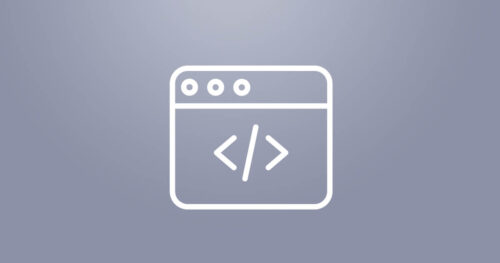This course will teach you and your team to use Xamarin. Forms to build fully native Android, iOS and Universal Windows Platform apps with Xamarin and C#. Xamarin. Forms exposes a complete cross-platform UI toolkit for .NET developers
-
This course is intended for developers who are already familiar with java or kotlin app development, who wish to understand the capabilities of Android.
This course focuses more on Network programming, multithreading along with database and profiling tools. The features covered will include the tools you can use to create, test debug and package the android app.
-
CICS Command Level Programming provides an understanding of the CICS system, application environment and typical applications. The structure of CICS pseudo-conversational application programs are discussed and reviewed in detail. The course consists of a series of lectures, discussions and class exercises with hands-on programming sessions.
-
This course is intended for developers who are already familiar with Objective C or Swift, developer who wish to understand the capabilities of IOS Platform. This course focuses more on Delegate and Observer pattern, multithreading along with database and profiling tools. The features covered will include the tools you can use to create, test debug and package the IOS app.
-
R is an open-source free programming language for statistical computing, data analysis, and graphics. R is used by a growing number of managers and data analysts inside corporations and academia. R has also found followers among statisticians, engineers and scientists without computer programming skills who find it easy to use. Its popularity is due to the increasing use of data mining for various goals such as set ad prices, find new drugs more quickly or fine-tune financial models. R has a wide variety of packages for data mining. It’s a language that many non-programmers can easily work with, naturally extending a skill set that is common to high-end Excel users. It’s the perfect tool for when the analyst has a statistical, numerical, or probabilities-based problem based on real data and they’ve pushed Excel past its limits.
-
Systems Administrators and DevOp Engineers have always been charged to do more with less. Defining infrastructure in code and automating its deployment helps improve operational efficiency and lower administrative overhead. In this course, Terraform – Getting Started, you’ll learn foundational knowledge of Hashicorp’s Terraform software, a toolset for infrastructure automation. First, you’ll discover how to create and update a basic configuration. Next, you’ll explore how to use provisioners, functions, and providers to expand your deployment.
Finally, you’ll learn how to leverage abstraction and improve code reuse with variables, state files, and modules. When you’re finished with this course, you’ll have the skills and knowledge of Terraform needed to write, plan, and create automated infrastructure deployments.
-
Participants will be able to learn comprehensively about Jenkins that provides many plugins to support building, deploying and automating any project. At the end of this course, one would be able to exhibit a good understanding on Jenkins as an extensible automation server and also that it can be used as a simple CI server or turned into the continuous delivery hub for any project.
-
This dynamic Blockchain Security course covers all known aspects of Blockchain security that exist in the Blockchain environment today. This course provides a detailed overview of all Blockchain security issues, including threats, risk mitigation, node security integrity, confidentiality, best security practices, advanced Blockchain security and more. The in-depth lab sessions will provide the student with practical, real world tools for not only recognizing security threats, but mitigation and prevention as well.
-
The Introduction to MySQL course covers the basics of the SQL language as implemented by MySQL. The course is designed to give delegates practical experience in writing SQL statements using the MySQL client program and MySQL Workbench. The basic SQL statements, including the use of SQL functions and the basic table and view handling statements are introduced.
-
Docker is an open-source platform for automating the process of building, shipping and running applications inside containers. This instructor-led, live training (onsite or remote) is aimed at engineers who wish to use Docker to deploy and manage software as containers instead of as traditional stand-alone software.
-
IOT brings together knowledge previously available only in white papers, standards documents, and other hard-to-find sources—or nowhere at all. The authors begin with a high-level overview of IoT and introduce key concepts needed to successfully design IoT solutions.
-
Most of today’s IoT connections are industrial. Industrial IoT (IoT) connections require Low Power Wide Area (LPWA) technologies to provide connectivity, coverage and subscription capabilities for low bandwidth applications. Although these requirements could be served by existing cellular networks, such networks may not be ideal. NB-IoT (Narrow Band IoT) technology offers a promising solution.
NB-IoT allows IoT devices to operate over carrier networks such as GSM and “guard bands” between LTE channels. NB-IoT needs only 200kHz of bandwidth and can efficiently connect large numbers of endpoint devices (up to 50,000 per NB-IoT network cell). Its low power requirements makes it ideal for use in small, uncomplicated IoT gadgets such as smart parking, utilities and wearables.
-
Our Sap Hana Training course will help you understand and learn the fundamentals and will also felicitate on training hands-on for the better grasp on the course. Further, we have the highly qualified professionals who will train you about Sap Hana Studio, Modeling, Security features and its various other aspects. This course is designed in such a way that it will make you understand ‘why sap Hana is a fundamentally different database engine.
-
PostgreSQL is the most advanced open source database; it is globally accepted as an incredibly powerful tool for database management. PostgreSQL Administration & Development course offers you the information required to manage your live production database. It handles the administration and performance tuning of PostgreSQL databases. The candidates of PSQL training program are likely to learn the use of specialized PostgreSQL (AKA Postgres) modules such as replication, connection pooling, and full-text searching.
-
This hands-on course provides training on standard UNIX commands and utilities used for day to day tasks including file manipulation, program execution and control, and effective use of the shell and desktop environments. The course presents the concepts necessary to understand the way UNIX works as well as the system’s most commonly used commands. Data manipulation utilities and shell syntax for synthesizing command pipelines are emphasized. Bourne shell, Bash shell and Korn shell programming techniques are introduced so students will be able to read and modify existing shell scripts as well as create their own. Desktop environments are also introduced from a user’s perspective, including common window managers, Open Office utilities and an introduction to configuration tools. Comprehensive hands on exercises are integrated throughout to reinforce learning and develop real competency.
-
This course exposes the experienced Integration Architect to Best Practice Architectural Principles for the webMethods Suite. The class starts with describing key Architectural framework principles to execution of the webMethods platform. Participants will learn and understand the webMethods Reference Architecture. The participant will also explore many key features and aspects of the webMethods ESB, BPMS, and Cache Management to deliver a highly-available and performant enterprise architecture.
-
Fintech Foundations course is designed to introduce you to the fundamental building blocks of financial technologies and real-world applications through case studies. This course is a beginner level course and you don’t need any background in finance or technology.
-
This course will help to write macros in Excel using programming language Visual Basic Application (VBA). Recorded macro can edit to customize it to fulfill our requirement and one can directly go for coding to accomplish the required tasks. One can write his own functions and procedures, design forms and working with add-ins using VBA Macro
-
Intensive and hands-on, the course emphasizes becoming productive quickly as a Java application developer. This course quickly covers the Java language syntax and then moves into the object-oriented features of the language. As a participant you will be able to create basic applications using the Java 8 programming language.
The participants will also be able to describe object-oriented concepts, object-oriented programming (OOP) concepts, and Java platforms and technologies. This course will use Eclipse as an IDE.
-
The course provides core server-side Java web technologies. Covers topics on core java, JDBC Technology and Servlets. It then shows how JSP is built on the Servlet architecture. Additionally, the class shows how to use JSTL, custom tags and expression language to reduce Java code in web pages while adding tremendous power and capability to those pages. The class will provide hands-on practical skills based on actual project case study.
-
The Jamf 200 Course offers a core understanding of Jamf Pro, as well as an enterprise-focused examination of the macOS and iOS platforms.
-
Javafx Programming is intended for software engineers, systems analysts, program managers and user support personnel who wish to make beautiful UI using the Java programming language.
-
For this course you will become proficient in JavaScript development and see the scope of javascript to Build games, web apps and websites. You’ll go from beginner to extremely high-level with hands on projects customized to your need.
-
This course offers hands-on experience with Spring and its major features, including configuration, data access, web and REST applications, Spring Boot, Spring Security and using Spring Cloud to build a small microservices application. On completion, participants will have a foundation for creating enterprise-ready applications.




